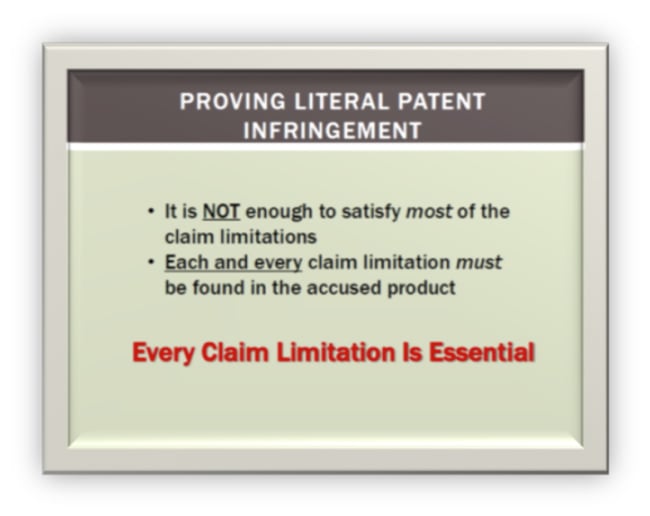In a previous article I told you about five surprises I found in moving from my previous position as an IP litigator to my current position as a litigation consultant. After a few more weeks on the job and a bit more day-to-day experience as Managing Director, Litigation Consulting for A2L, I find that there is another big surprise: the amount of thought, time and work that goes into each and every trial graphic.
As an attorney, and particularly one well versed in technology generally and litigation technology specifically, even I had no idea what really went into the development of top notch trial graphics. Like other litigators, I had plenty of experience in making presentations and creating PowerPoint slides to help make my points. But, I’ve discovered that there is a huge difference between what an attorney can create at his desk at a law firm and what can be built by a team of litigation consultants and trial graphics artists working with that attorney.
Compare this PowerPoint trial graphic (above) produced by our litigation consulting team at A2L with another trial graphic (below) that I’m sure you’ll agree is similar to what you’d produce at your desk at a law firm (this subject matter is near to my heart as a patent attorney).
The law firm example slide is clear and straightforward and conveys all the information you need – that to infringe a patent claim literally (not considering the doctrine of equivalents), every limitation of that claim must be in the accused product (or process). This slide could easily be used in any presentation, for example, in a client pitch meeting or in an explanatory presentation by an associate to a partner.
Now compare it with the litigation consultant-created trial graphics example at the top. The litigation consultants' work conveys all the same information provided in the basic text-based slide (i.e., if the accused product is missing even one element of the claim, there’s no literal infringement), but it provides it as a visually “catchy” analogy for the jurors -- one they’ll never forget). It is persuasive, not just informative. And it does all this without adding complexity. These additional aspects of the consultants' slide are what makes it a key to winning at trial.
It may surprise you to learn that it’s not so easy to take these additional steps in developing a persuasive presentation. To make this “magic” happen, a team of litigation consultants (preferably made up of attorneys, as is our team at A2L) and experienced trial graphics artists devise the best way to present key evidence or themes graphically and textually to make points with a jury. Visual input, such as that presented in the bowling slide above, tends to have impact and stick with jurors and helps them make difficult decisions on contentious points, even when they might otherwise tune out pure verbal/textual argument.
This extra step constitutes some of the value added by a litigation consulting firm. The very trial graphics slide you see above (the bowling one, of course) contributed to a major recent win in a patent infringement case for an A2L Consulting client in Power Integrations, Inc. v. Fairchild Semiconductors International, Inc., et al., C.A. No. 08-309-LPS (as reported here).
Ryan Flax is the Managing Director of Litigation Consulting at A2L Consulting. He joined A2L after practicing as a patent litigator who contributed to more than $1 billion in successful outcomes.





Leave a Comment